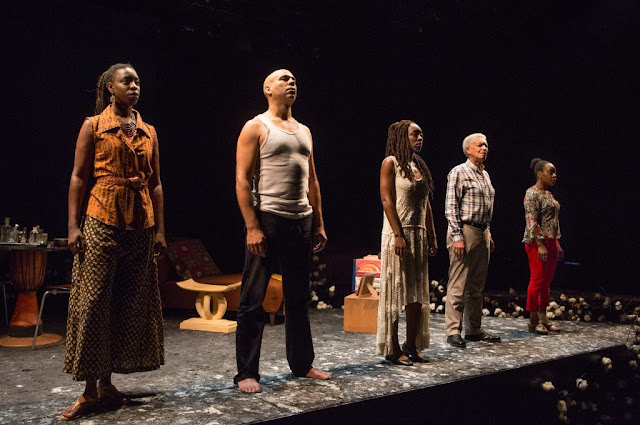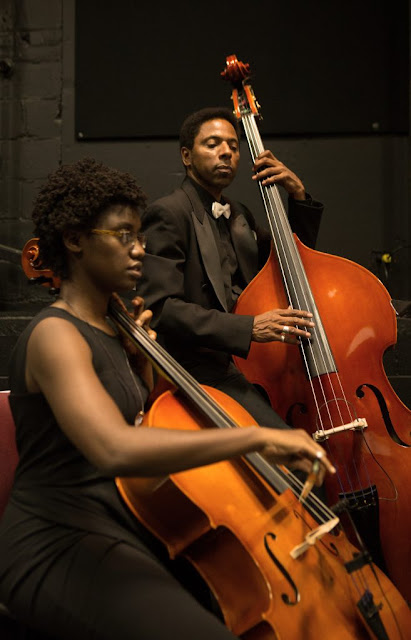Running until January 5th at the Elgin Theatre -
Do not miss this years instalment of the Ross Petty holiday musical version of The Wizard of Oz. This spectacular seasonal event relies upon powerful performances from the entire cast - with standouts by Michael De Rose as Sugarbum (the stock drag fairy character) and Eric Craig as the Tin Man as they collaborate in a show stopping duet of the iconic pop tune All By Myself.
The arrangement of this anthem like song (Joseph Tritt, Music Director), as a kind of call and response duet, gives the performers ample opportunity to reveal their intense vocal powers by way of a lighthearted oneupmanship that both entertains and surprises delighted audiences during the gorgeous vocal gymnastics occurring between characters. Coupling the fairy with the Tin Man also creates a sly, flirtatious, and seriocomic romantic crescendo for the two characters who find themselves longing for partnership, community, and camaraderie as they traverse that yellow brick road in search to Oz. And Sugarbum's final landing place in the Emerald City is a wonderful twist on power relations and the collective strength of believing in fairies.
Sugarbum with the Tin Man (Eric Craig)
Camille Eanga-Selenge's Dorothy is a wonderful, wise, and wide-eyed characterization as she carries her adorable Toto through a maze of personality and human emotion. Her beautifully delivered solo songs give her great empathy and leadership as she deftly (frequently putting herself in dastardly danger) manages her comrades along the way.
Camille Eanga-Selenge as Dorothy
Eddie Glen, in dual roles, takes on an Elton John like quality as he sweeps in and out of the action with great comic power and commanding musical vocals. In his stylish emerald green suit he becomes a collage-like version of iconic figures ranging from Elton to Bowie, and at times even a vaguely reminiscent version of a wiggy, orange'ish upswept shadow of Barry Manilow's once riddled presence.
Eddie Glen (centre) left - Eric Craig (Tin Man), Matt Nethersole (Scarecrow) / right -Daniel Williston (Lion) Olive (Toto), Camille Eanga-Selenge (Dorothy)
Sugarbum with the Munchkins and Sara-Jeanne Hosie (far right) as Miss Gulch/Sulphura
As necessary backup during the long journey along that famous brick road, the Munchkins are constantly involved in fabulous choreography and song by director/choreographer Tracey Flye - whose skill for filling the stage with intricate dance movement and ensemble action is impressive and complex throughout the whole delightful spectacle.
Another standout performance comes from Sara-Jeanne Hosie as Sulphura, the sexy foil for all that happens along the way. Her strong layered musical vocals and detailed characterization, with a wicked emotional range, punctuates the action with the conflict necessary to this coming of age tale of a young woman in search of hearth and home in the midst of a terrible twister of emotion and physical challenge.
Sara-Jeanne Hosie (Sulphura)
Sara-Jeanne Hosie (Miss Gulch)
Set and costumes by Cory Sincennes provide bright pops of tone and emphatic cartoon-like shapes that delineate the fantasy-like quality of the overall environment - with dense shades of purple, black, blue, and green sets and backdrops displaying fantastical contrast for the evil moments of Sulphura's loathsome plotting against Dorothy and her friends. The always refreshing 'gay' undertones surface blithely at one point when one of the characters lays claim to the cheerfully citational/liberationist slogan "I am a friend of Dorothy's." Through thick and thin. Aren't we all?
Scarecrow (Matt Nethersole) and Lion (Daniel Williston) round out the cast with remarkable performances that give their loveable characters depth, comic versatility, and musical distinction. And then there is the amazingly well-behaved Olive, in her non-speaking non-barking part as Toto, who is most certainly not in Kansas any longer. She is in a wonderful pastiche of current political Toronto trials, comic interplay, and emotional twists for the entire family to enjoy, grapple, and interact with at this wonderful annual Toronto holiday event. Beautifully rendered this year with a stellar cast, wonderful music, and a version of a great old story updated for contemporary audiences to relate to, revel in and thoroughly enjoy.
THE MUNCHKINS
LION - DANIEL WILLISTON (WHO CARRIED A DELIGHTFULLY 'GAY' PURSE THROUGHOUT - NO, IT DID NOT FALL OUT OF HIS MOUTH!!!)
SCARECROW - MATT NETHERSOLE
AT THE ELGIN THEATRE
AT THE ELGIN THEATRE
UNTIL JANUARY 5TH













































